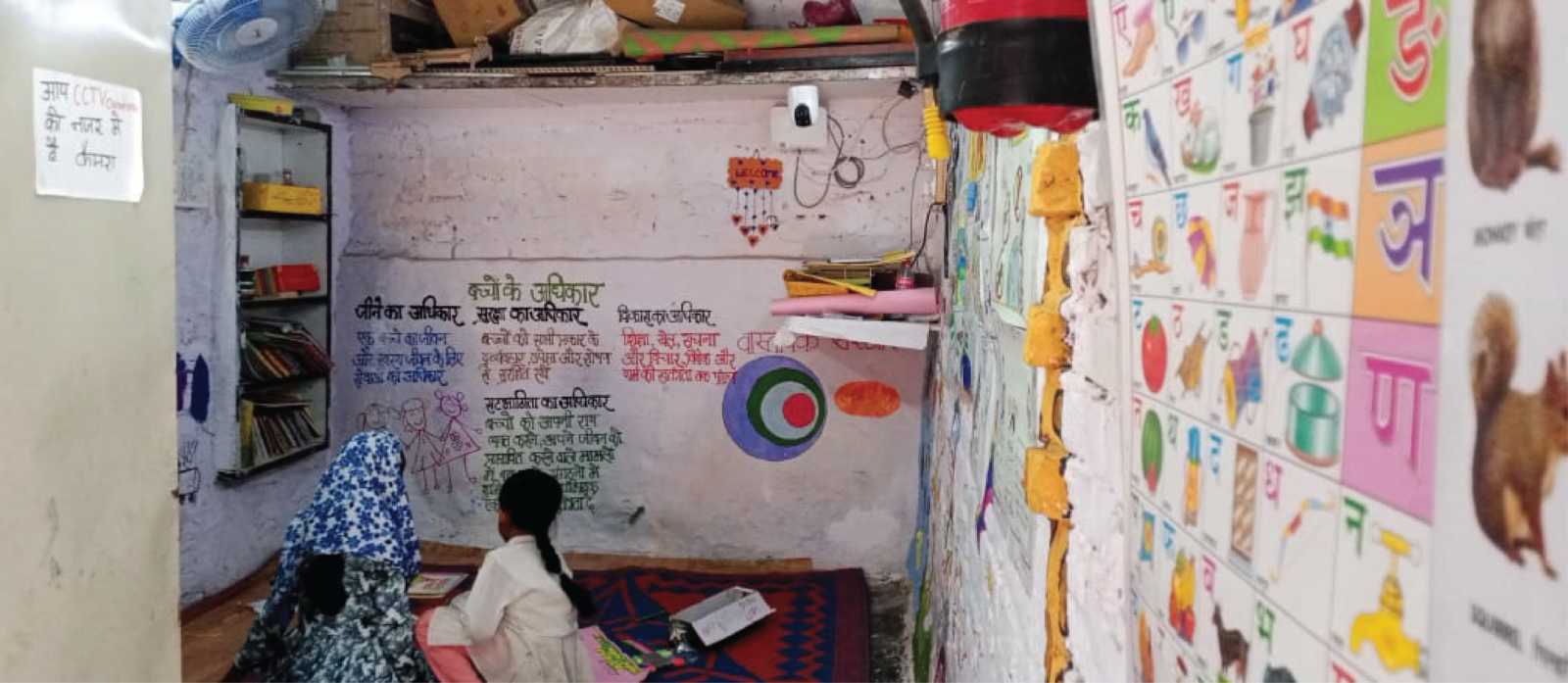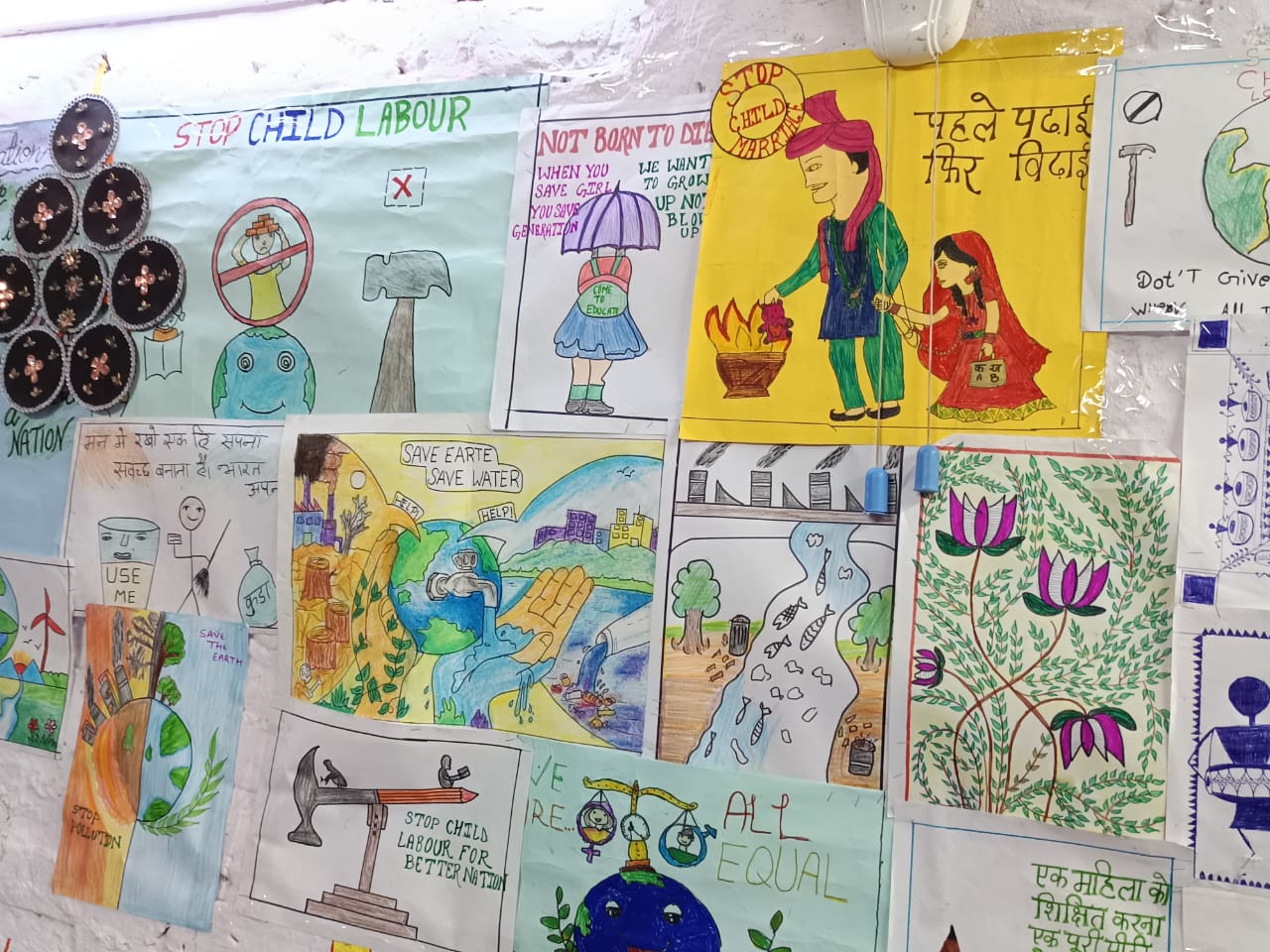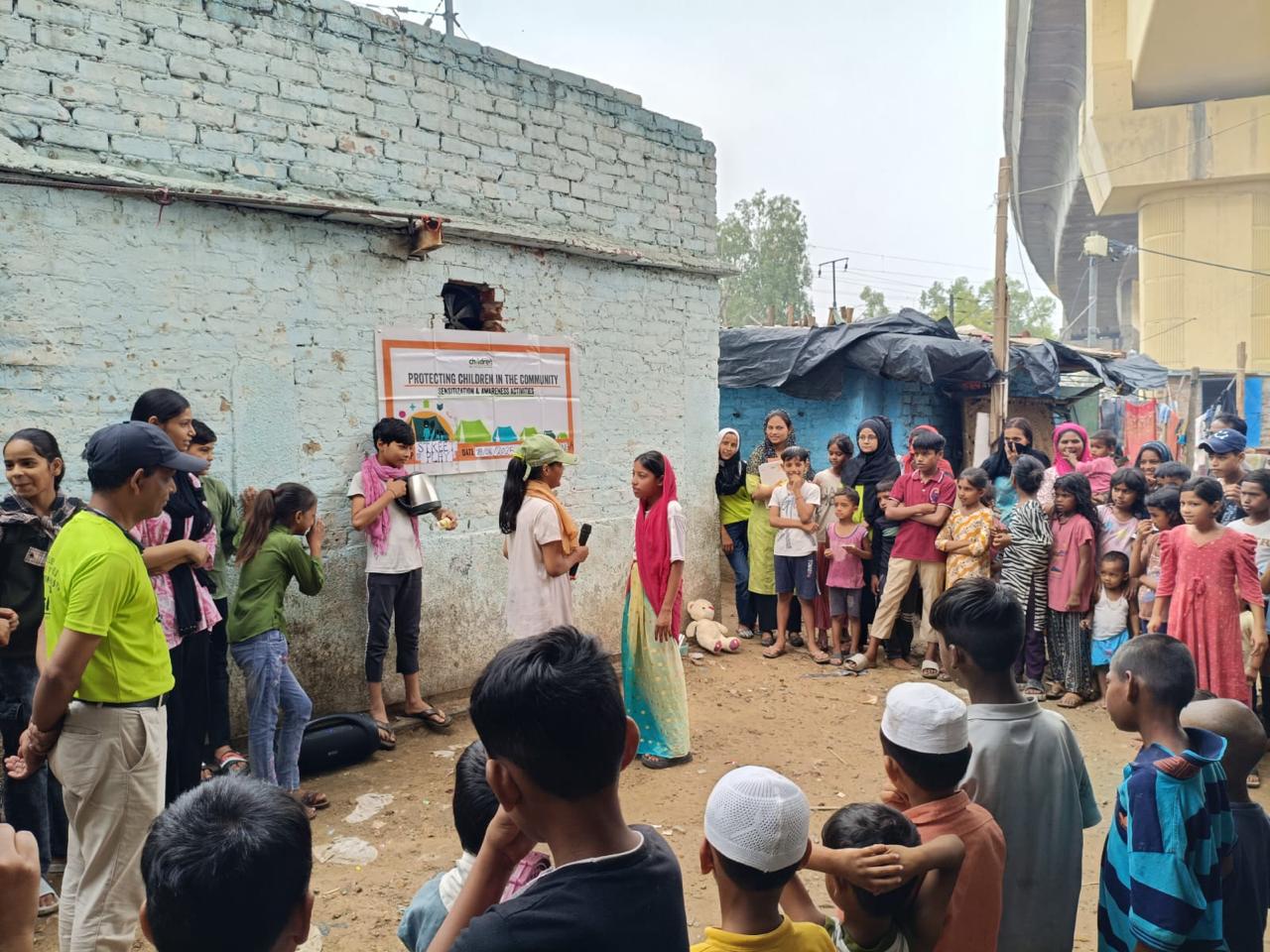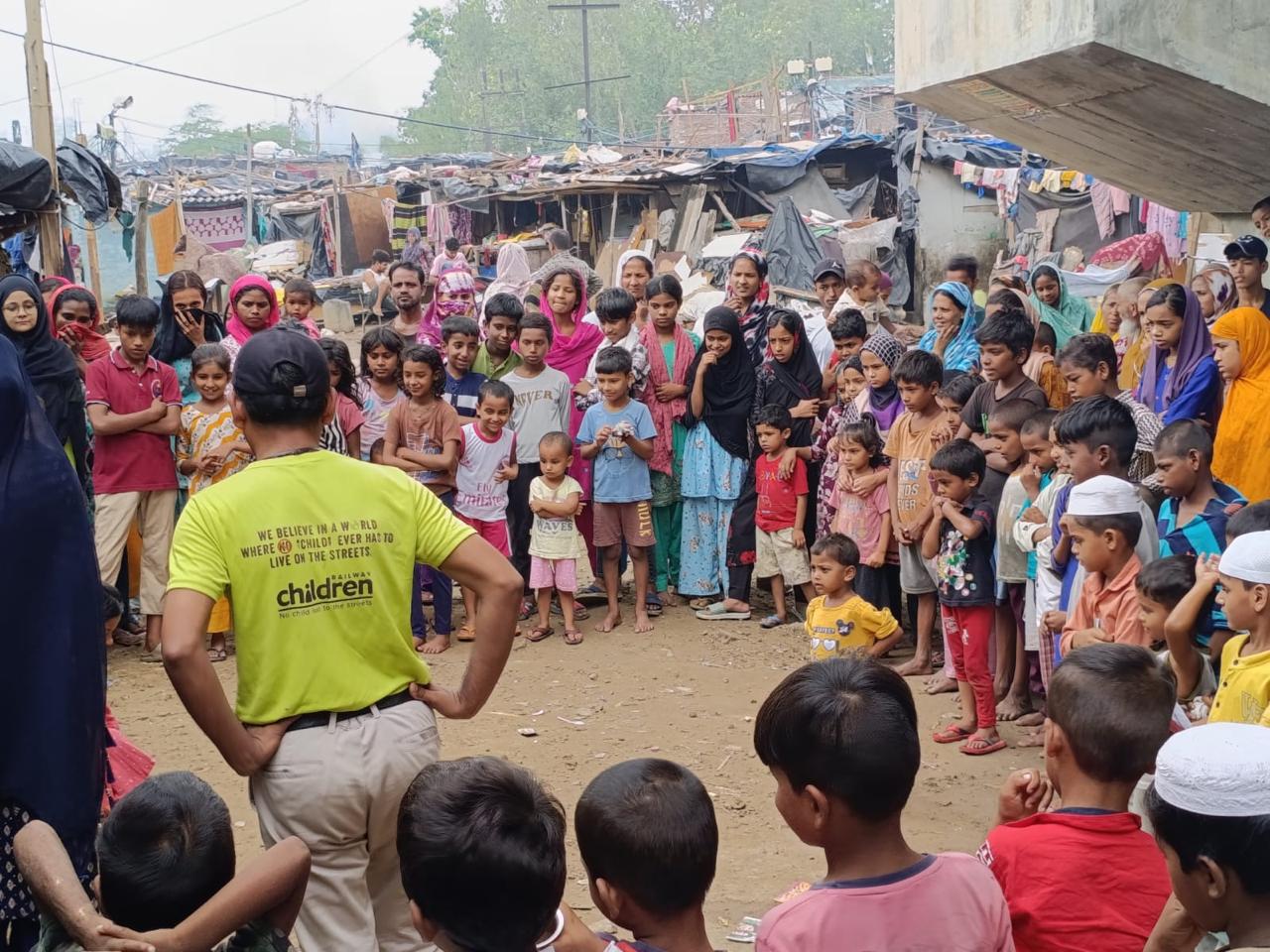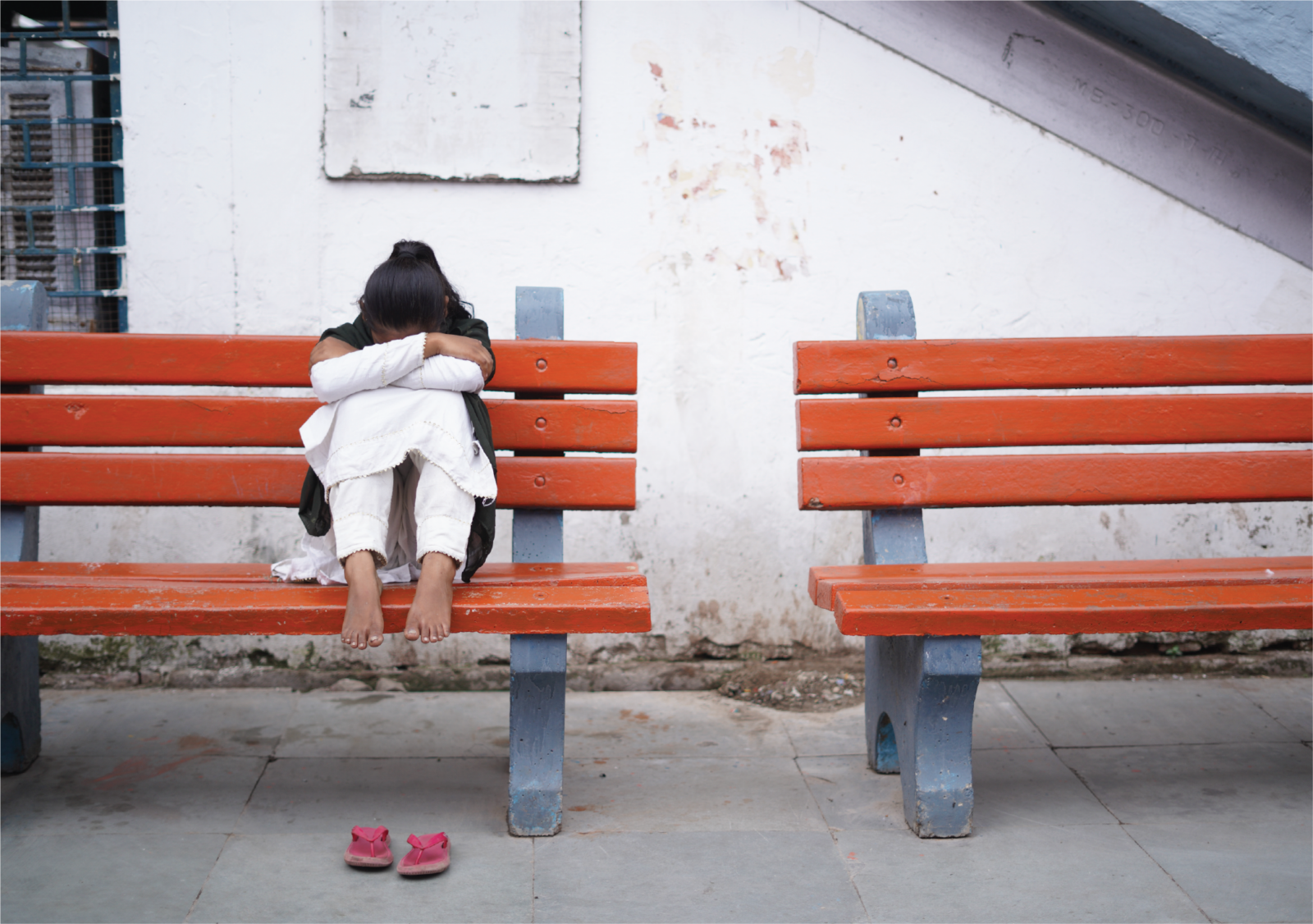The Search for an Ideal Child Activity Centre
It all began with a simple yet urgent mission: finding a space to establish a Child Activity Center in Darbhanga where children gather to learn and express themselves. Our team of community outreach workers and volunteers scoured the narrow lanes of the basti, but the clustered shanties, often built with thatch and mud, left little room for a safe and welcoming centre.
After days of searching, we finally found a modest, bare space with a thatched roof and wooden walls. Through patient conversations and trust-building with the owner, our team gradually secured his support. The roof was replaced with cement sheets, the walls rebuilt with brick, and the space expanded to host a growing number of eager young participants.
Art on the Wall and What it Symbolises
Eager to resume the lessons, group discussions, and activities that took place in their previous center, girls and boys thronged their new center with renewed enthusiasm. However, one step in and the whitewashed brick walls of the new space stood out as a blank canvas to this motley group of spirited adolescents.
Armed with sketch pens, crayons, watercolours, and a growing awareness of their rights, the children got to work. Each bold and expressive artwork adorning the walls of Darbhanga’s new Child Activity Center is a reminder of the many systemic issues that plague this community. But witnessing the focus and thrilling participation of children, it would not be far-fetched to believe that these issues face a short shelf life now that an empowered youth is up against them.
Participation and Psychology: How Involvement Benefits Children
When children engage in shaping the discourse in their humble basti, something extraordinary happens—they feel heard, valued, and empowered. Being part of community action helps children build social skills, teamwork, and empathy. They learn to listen to others, resolve conflicts, and work collaboratively toward a shared goal.
Equally, it helps reduce feelings of isolation, helplessness, or stigma that many vulnerable children experience. Participation helps children realize their agency. And when that happens, change doesn’t just reach them, it begins with them.
Street Play as a Community Message
This spirit of expression recently took the form of a powerful street play, as children from Tulsi Nagar took to the lanes of Darbhanga to express their understanding of social issues through art, words, and performances.
Received with roaring applause from the spectators, this street play was unique because it was prepared, rehearsed, and performed entirely by the children of Tulsi Nagar for their counterparts in Darbhanga. With impactful dialogues and piercing expressions, the group of children brought everyone’s attention to the two urgent issues of child education and child labour. What made this event even more meaningful was how actively the children were involved in the entire process, from rehearsals to stage preparation and final delivery. Their commitment and enthusiasm were unmatched, and their message to the community was loud and clear: every child deserves education, not exploitation.
Participation as a Catalyst for Lasting Change
These stories of children engaging with great gusto in varied activities of awareness-building prove that when children are given space to participate, they don’t just absorb change; they create it. Whether through art, theatre, or discussion, children are shaping their communities in quiet, powerful ways. They’re questioning harmful practices, advocating for their rights, and inspiring adults to listen.
